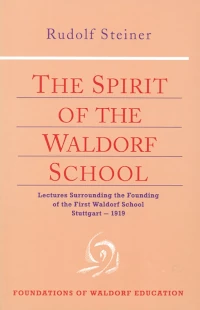The Spirit of the Waldorf School
GA 297

Emil Molt, Director of the Waldorf-Astoria Cigarette Company and student of Rudolf Steiner, first had the desire to be active in a reformation of German society during a lecture given by Dr. Steiner in Switzerland in early November 1918. Shortly thereafter, during a mid-November discussion with some of the workers at the Waldorf-Astoria factory, he resolved to create a school, though the school as yet had no firm form. In a discussion with Rudolf Steiner in January 1919, the latter mentioned that in order to achieve a real social reformation, schools must be formed.
Three months later, following a lecture by Steiner to the factory workers, the workers expressed a desire for a new school, a desire which was, of course, immediately taken up by Molt. Some weeks before, Molt had already begun discussions with the Minister of Education concerning the formation of a new unified school, discussions that were tending in a positive direction. Two days after the meeting with the factory workers, a first “teachers” meeting took place with Steiner, Molt and two o the future Waldorf School teachers (Stockmeyer and Hahn). Three weeks later, the Minister of Education agreed to the new school. In particular, it was agreed that the new school would meet the standards set for public school students at the end of the third, sixth and eighth grades. However, during these three periods, what and how the students were to be taught were left to the pedagogical leadership of the school. This agreement allowed Rudolf Steiner, Emil Molt and others to begin the formation of the Waldorf School.
—From the Introduction by the translators: Robert F. Lathe and Nancy Parsons Whittaker
| I. The Intent of the Waldorf School | August 24, 1919 | |
| Freeing the schools of politics and economics. The art of education provides a means to use subject matter to develop strength of soul. Thinking, Feeling and Willing from the point of view of life before birth and after death. The inner relationship of the teacher to the child requires complete freedom in education. Kretzschmar as an example of this longing. | ||
| II. The Spirit of the Waldorf School | August 31, 1919 | |
| Guiding principles for education result from an anthroposophical study of humanity. Examples of child developmental stages and the form of the curriculum. The child must be guided to learn from life. | ||
| III. A Lecture for Prospective Parents of the Waldorf School | August 31, 1919 | |
| Guiding principles for founding the School. The nature of the unified school. The new understanding of humanity as a pedagogical basis— it creates a love of humanity. The goal of the education—that people become free and independent. The parents’ interest and understanding assists the success of the Waldorf School. | ||
| IV. Supersensible Knowledge and Social Pedagogical Life | September 24, 1919 | |
| Capacities used by Spiritual Science to see into the supersensible world. Transformation of human developmental forces into Imagination, Inspiration and Intuition. Scientific thinking and its effects upon social thinking. Educating to prepare people to learn from life. Bringing life into education. Need to be more concrete and less abstract. | ||
| V. The Social Pedagogical Significance of Spiritual Science | November 25, 1919 | |
| Inability of modern intellectual life to effect positive social change. Working with, not against, human developmental forces in education. Transformation of human developmental forces into Imagination, Inspiration, and Intuition. Spiritual science goes beyond conventional science. | ||
| VI. A Lecture for Public School Teachers | November 27, 1919 | |
| Limits of scientific method. Children as imitative beings. The child’s devotion to true authority. Educating the whole person. Child’s developing capacity for judgment. Goal of spiritual science to add to existing culture, not to replace culture. | ||

